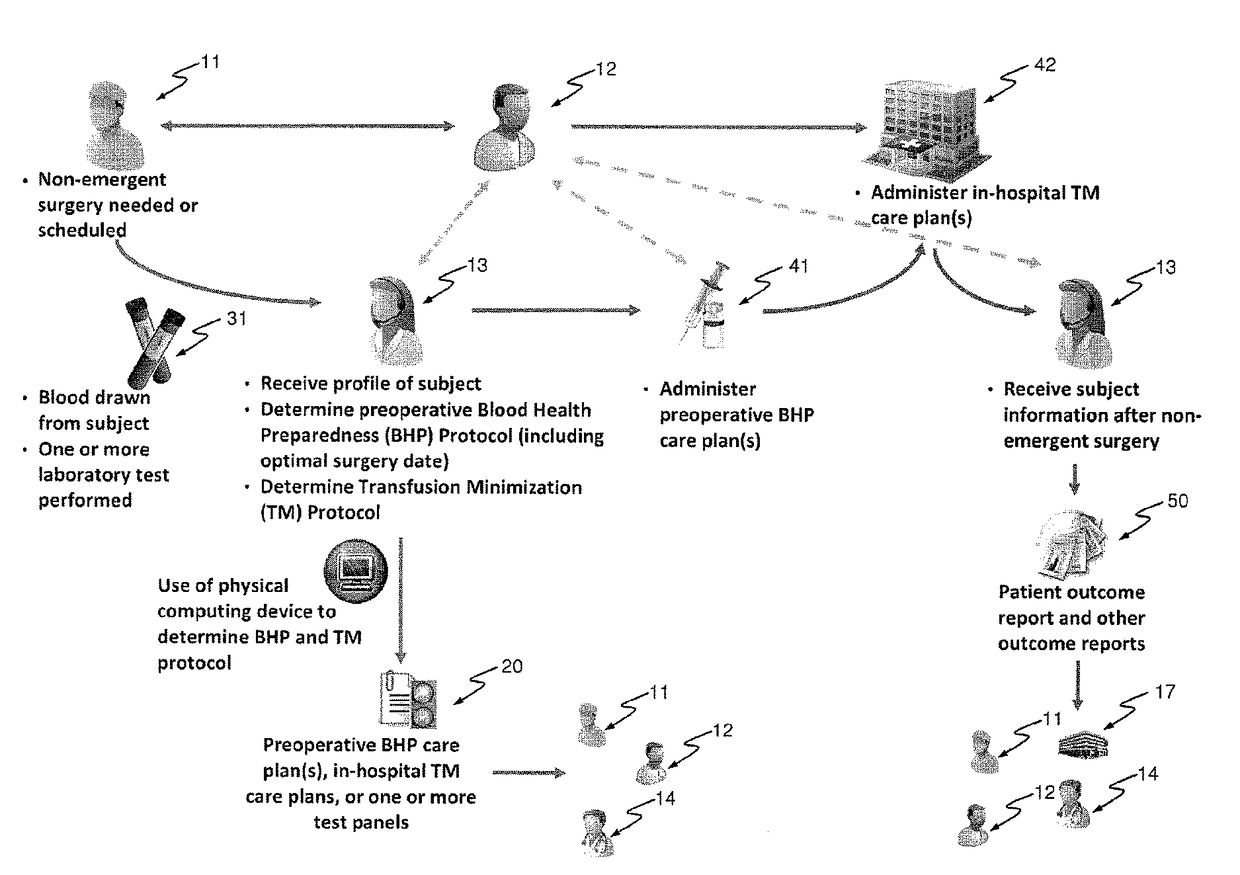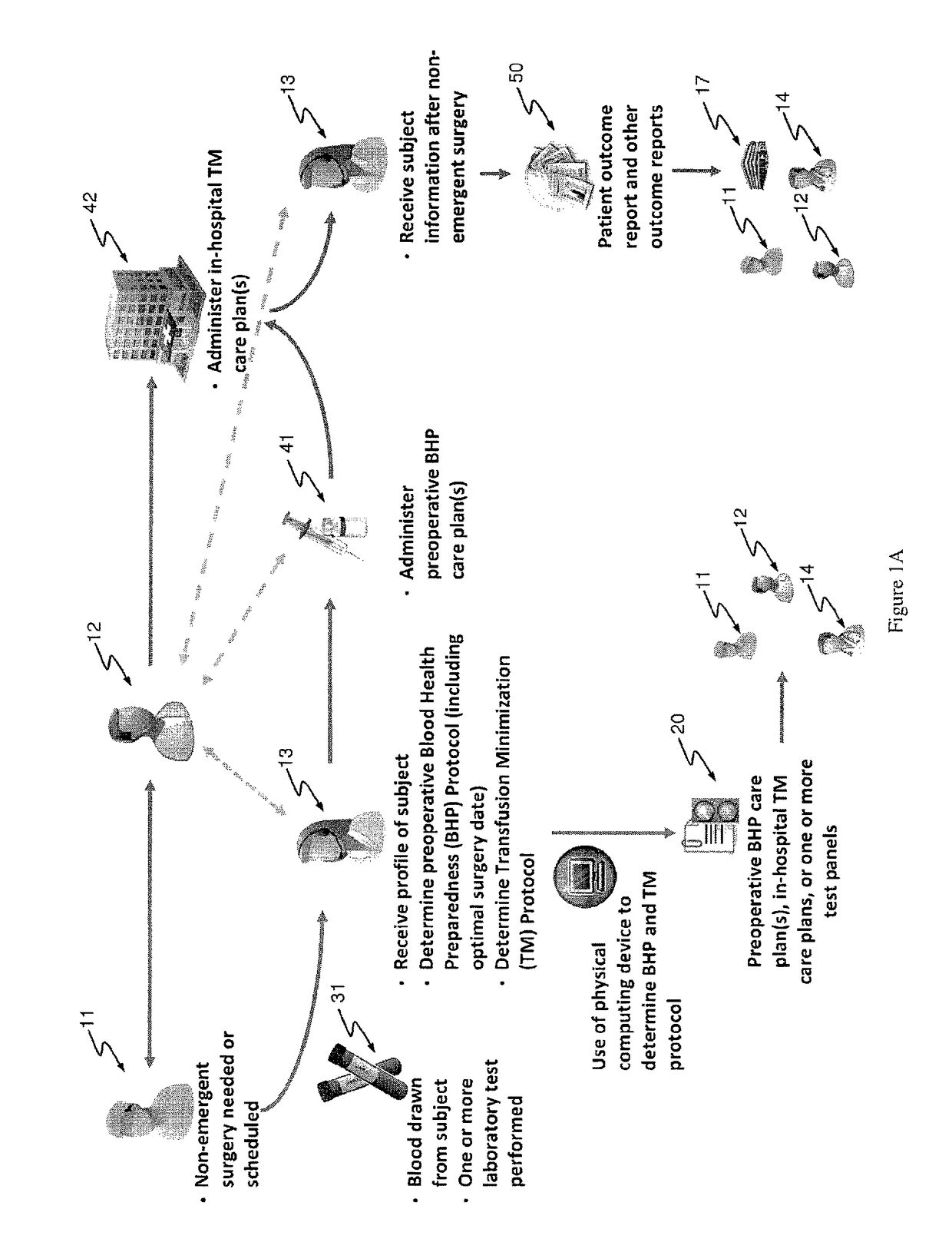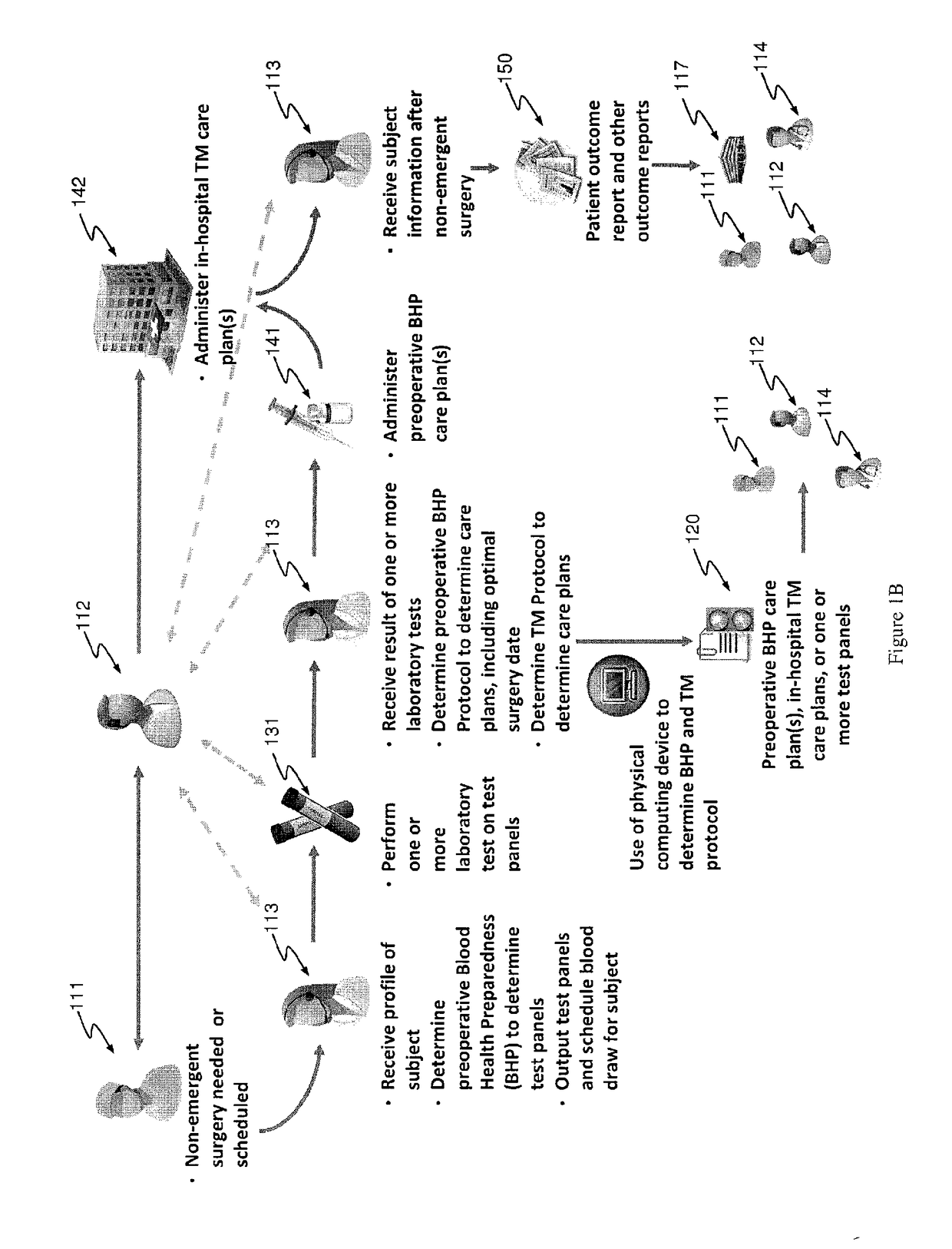Methods and devices for reducing transfusions during or after surgery and for improving quality of life and function in chronic disease
a technology of transfusion and applied in the field of methods and devices, can solve the problems of overtreatment of large numbers of patients with biologic products associated with significant risk and expense, increased hospital stay, increased risk of transfusion, etc., and achieves the effect of reducing the risk of transfusion, and improving the quality of life and function
- Summary
- Abstract
- Description
- Claims
- Application Information
AI Technical Summary
Benefits of technology
Problems solved by technology
Method used
Image
Examples
example
[0308]Three patients with different profiles are submitted to the transfusion management healthcare provider. The patients are all scheduled for a primary hip surgery, where patient 1 is an elderly female patient with anemia, patient 2 is an elderly female patient with anemia and an active infection, and patient 3 is a healthy male patient. More details about the patient's profile are provided in Table 3, which also provides an evaluation using the blood health management program.
[0309]
TABLE 3Question (Q)ResponsePatient 1Patient 2Patient 3Type of ProcedurePrimary hipPrimary hipPrimary hipQ1. Is anemia present?Yes (Y) or No (N)YYNQ2. Is the gender male?If yes, then X2 = 0.110If no, then X2 = 1.Q3. Is the age moreIf yes, then X3 = 1.110than 65 years?If no, then X3 = 0.Q4. Is the non-If yes, then X4 = 0.000elective surgery twoIf no, then X4 = 1.or more weeks fromscheduling to startdate?Q5. Is anemiaIf yes, then go toYYNpresent?Q6-Q8.If no, then go to Q9.Q6. Is hemoglobinIf yes, then X6...
PUM
 Login to View More
Login to View More Abstract
Description
Claims
Application Information
 Login to View More
Login to View More - R&D
- Intellectual Property
- Life Sciences
- Materials
- Tech Scout
- Unparalleled Data Quality
- Higher Quality Content
- 60% Fewer Hallucinations
Browse by: Latest US Patents, China's latest patents, Technical Efficacy Thesaurus, Application Domain, Technology Topic, Popular Technical Reports.
© 2025 PatSnap. All rights reserved.Legal|Privacy policy|Modern Slavery Act Transparency Statement|Sitemap|About US| Contact US: help@patsnap.com



